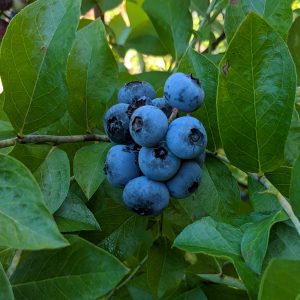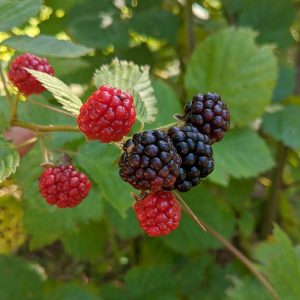Stuart Hardy Pecan
This product can only be purchased as part of a retail Landscape Package.
For bare root wholesale quantities and pricing please see our Wholesale Catalog.
Carya illinoinensis ‘Stuart’
The Stuart Hardy Pecan is a common cultivar grown in the Southeastern United States. It needs less pruning than an other cultivars and usually takes 8-10 years to bear fruit. It usually has a thicker shell than other pecan varieties, but is popular with wildlife nonetheless. All pecan trees are monoecious – they have separate male and female flowers on the same tree – but much of their pollen is not released when flowers are receptive. Because of this condition, pollination within and between the same cultivars is limited. To alleviate this limitation, it is recommended that an additional early pollinating cultivar be planted if your aim is cultivation for intentional harvest. Cultivars are separated into type I and type II to describe this pollen-releasing timing. The Stuart Hardy Pecan is considered a type II cultivar. Recommended type I cultivars include ‘Cape Fear’ and ‘Pawnee.’ Planting instruction can be found at boydnursery.net/planting/.
| Classification | |
|---|---|
| Diseases & Insects | Can be prone to aphids, pecan weevils, twig girdlers, and fall webworms; scab can infect both nuts and foliage; brittle branches typical of the species are prone to breakage and late frosts can reduce nut production for this reason |
| Family | Juglandaceae |
| Flowers | Flowers are monoecious with the male borne in drooping 3-branched catkins; the female in new flowered terminal spikes, developing with the leaves in April into early May; fruits are bony, hard shelled nuts encased in a 4-valved "husk" (involucre) often splitting away but in some species persisting; ripen in October and drop from trees; seeds are sweet |
| Growth Rate | |
| Hardiness Range | zone 5a – 9b *need help finding your hardiness zone? |
| Leaves | Leaves are alternate, pinnately compound, 12 to 20" long, 9, 11 to 17 leaflets, each leaflet 4 to 7" long, 1 to 3" wide, short-stalked, dark gree, oblong-lanceolate, usually falcate, serrate or doubly serrate, glandular and tomentose when young, becoming glabrous; petiole-glabrous or pubescent; yellow-fall color |
| Plant Type | |
| Primary Features | |
| Size | 70-100 feet tall at maturity with 40-70 foot spread |
| Sun Requirement |




